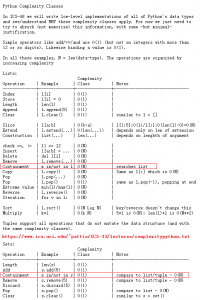1.用Python执行系统命令
首先,确定搜索关键字:
http://search.aol.com/aol/search?q=python+execute+linux+system+command
用Python执行系统命令时,’\r\n’可能会引起的问题:
http://stackoverflow.com/questions/26555814/using-os-system-in-python-to-execute-linux-command
如何知道os.system()函数是使用哪个shell执行的命令?
http://stackoverflow.com/questions/905221/os-system-execute-command-under-which-linux-shell
os.system() just calls the system() system call (“man 3 system”). On most *nixes this means you get /bin/sh.
subprocess.Popen()的executable参数 #可以指定使用Bash而不是默认的/bin/sh
在Python中如何获取调用系统命令执行的返回内容?
如果想要获取系统命令执行后的返回内容,应该使用subprocess.Popen() 或者 os.popen() 而不是os.system(),原因如下:
http://stackoverflow.com/questions/1007855/popen-and-python
实例:
http://www.cyberciti.biz/faq/python-execute-unix-linux-command-examples/
2.如何获取Linux系统的网卡接口列表
首先,确定搜索关键字:
http://search.aol.com/aol/search?q=use+python+to+get+interface+name+%27%2Fproc%2Fnet%2Fdev%27
- http://stackoverflow.com/questions/1052589/how-can-i-parse-the-output-of-proc-net-dev-into-keyvalue-pairs-per-interface-u
- http://stackoverflow.com/questions/5281341/get-local-network-interface-addresses-using-only-proc
- http://search.aol.com/aol/search?q=get+linux+system%27s+interface+list
- http://www.cyberciti.biz/faq/linux-list-network-interfaces-names-command/
- http://unix.stackexchange.com/questions/125400/how-can-i-find-available-network-interfaces
- http://stackoverflow.com/questions/3837069/how-to-get-network-interface-card-names-in-python
# grep -A1 'lo:' /proc/net/dev | grep -v 'lo:' | awk -F':' '{print $1}'
eth0
# grep -A1 'lo:' /proc/net/dev | grep -v 'lo:' | awk -F':' '{print $1}' | sed 's/[[:space:]]//g'
eth0
In [5]: print os.popen("grep -A1 'lo:' /proc/net/dev | grep -v 'lo:' | awk -F':' '{print $1}' | sed 's/[[:space:]]//g'").read()
eth0
In [6]: print os.popen("grep -A1 'lo:' /proc/net/dev | grep -v 'lo:' | awk -F':' '{print $1}'").read().strip()
eth0
总结:可以通过Python调用系统命令(ip/ipconfig/netstat) 或 解析系统文件(/proc/net/dev)来得到。
3.在Python中判断某个字符串/数字是否在某一集合中的速度快慢对比
是 tuple() 快,还是 set() 快?
http://search.aol.com/aol/search?q=python+set+in+efficiency
- http://stackoverflow.com/questions/7110276/faster-membership-testing-in-python-than-set
- https://wiki.python.org/moin/PythonSpeed
- https://wiki.python.org/moin/TimeComplexity
- http://technobeans.wordpress.com/2012/04/09/performance-for-testing-memberships-list-vs-tuples-vs-sets/
- http://search.aol.com/aol/search?q=python+in+set+vs+tuple+efficiency
- http://stackoverflow.com/questions/68630/are-tuples-more-efficient-than-lists-in-python
- http://stackoverflow.com/questions/6063494/python-efficiency-lists-vs-tuples
最后可知,判断某一元素是否在某一集合中时,最佳的方案是 set ,list和tuple的复杂度为O(n),而 set 只有O(1):
https://www.ics.uci.edu/~pattis/ICS-33/lectures/complexitypython.txt
4.Python的内置函数:any()和all()的技巧
http://search.aol.com/aol/search?q=python+any+true
- http://stackoverflow.com/questions/16505456/how-exactly-does-the-python-any-function-work
- https://www.udacity.com/wiki/cs258/all-any #挺详细!
5.Python中的list和tuple的相互转换
It should work fine, don't use tuple, list or other special names as a variable name. It's probably whats causing your problem. >>> l = [4,5,6] >>> tuple(l) (4, 5, 6)
- http://stackoverflow.com/questions/12836128/python-convert-list-to-tuple
- http://ixyzero.com/blog/archives/689.html
6.用Python解压gzip字符串
#!/usr/bin/env python
# coding=utf-8
import sys, zlib, binascii
try:
with open(sys.argv[1], 'rb') as fp: original_str = fp.read()
except IOError as e:
print e
if len(original_str) > 2 and '1F8B' == binascii.hexlify(original_str[:2]).upper():
try:
data = zlib.decompress(original_str, 16+zlib.MAX_WBITS)
except:
print 'decompress error...'
sys.exit(1)
if len(sys.argv) == 3:
with open(sys.argv[2], 'wb') as fp: fp.write(data)
else:
print 'Length:', len(data)
print data

